Blockchains are mostly applied for traceability but to a lesser extent for payment or incentive
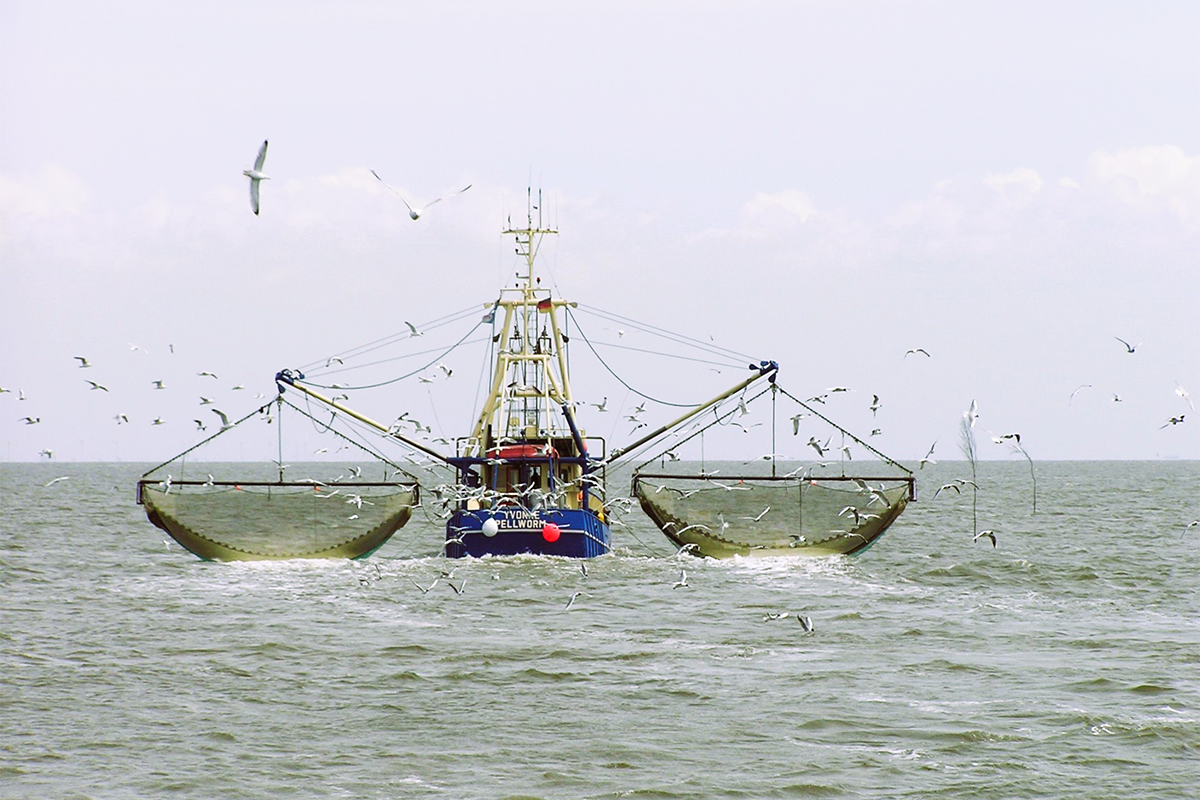
Blockchain is a novel technology that has been used in recent years to coordinate value chain actors. A blockchain is a distributed ledger technology that records transactions such as value, information, or digital events, which can be accessed and validated by participants without requiring central authority. Blockchains are highly standardized, therefore facilitating interaction between many diverse actors. Any record added to the blockchain cannot be deleted which makes transactions immutable.
The fishery and aquaculture sectors use blockchains to enhance traceability and transparency in value chains and to fight illegal, unreported, and unregulated fishing. Many new technological developments in blockchain are recently made, which allow for better scaling, lower costs as well as better enabling of use cases of blockchain. Blockchain applications in fisheries and beyond are expected to keep growing in the coming years.
This article – adapted and summarized from the original publication (Tolentino-Zondervan, F. et al. 2023. Use cases and future prospects of blockchain applications in global fishery and aquaculture value chains. Aquaculture Vol. 565, 25 February 2023, 739158) – analyzes the implementation of blockchain in seafood value chains in terms of its potentials and possible challenges, based on a literature review conducted using blockchain and global value chain frameworks.
Blockchain expands its aquaculture presence with shrimp and salmon
Blockchain use cases in the vertical dimension of the value chain
The vertical dimension focuses on the flow of products from suppliers to consumers and information from customers and retailers going to suppliers. The flow of products involves tracing seafood products from fishers, fish traders and processors, exporters, importers and brands or retailers. Blockchain addresses questions in vertical dimensions of global value chains through various use cases. These include traceability in the value chain, storytelling of products, distribution of incentives to chain actors for anchoring their data in the blockchain, use of smart contracts for coordinating transaction requirements in the value chain, peer-to-peer transactions that eliminate middlemen and tracking inventory along the chain.
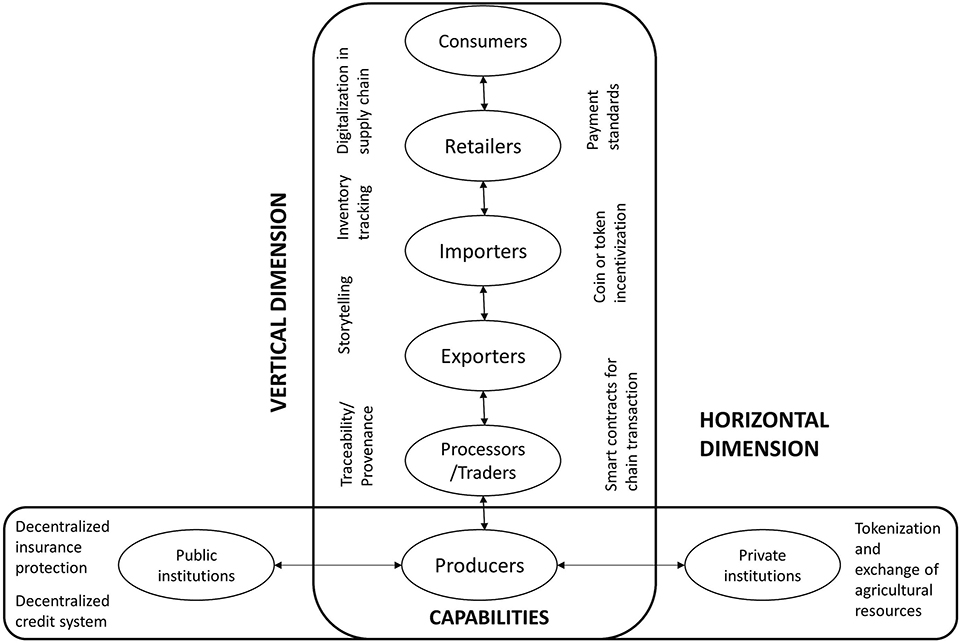
Consistent with the findings of any studies that analyze the use of different sustainability instruments in the value chains such as certifications, labels, and voluntary, this study illustrates that blockchain in the vertical dimension of the fishery and aquaculture value chains are mostly used to provide traceability and transparency of information to claim sustainable production. Almost all use cases of blockchain in fishery and aquaculture apply traceability and storytelling to address the quality; food safety; fraud; Illegal, unreported, and unregulated (IUU) fishing; and working condition issues.
The use of blockchain for transparency and traceability is needed as a market requirement and for business. The use of blockchain for traceability could further grow based on the developments in the macro-environment. For example, it is becoming a requirement at regional and international levels that products being imported across borders should be traceable and anchored on a database, as part of consumer protection and fight against IUU fishing.
In the USA, several fish products that are imported need to be traceable as part of the customs requirement. In the EU, seafood traceability at all stages of production (including catching or harvesting, processing, distribution, and retail) is a requirement. Current systems used in the EU vary per country while in some cases lack digitalization. The EU recently called for a mandatory and more standardized digital system for the traceability of fish and seafood products. Blockchain fits very well to these needs.
In addition, blockchains are often applied on species, fishing gear, specific country, or institution levels. With the current need of standardization on the international level, standardization of data will most likely push industries to move to blockchain. many companies are gaining a competitive advantage with the implementation of blockchain. As a future consequence, blockchain could become a potential standard for digitization in the supply chain and for managing the traceability of products.
Our study also shows that so far, only a few use cases of blockchain have moved beyond the traceability in the vertical dimension, by focusing as well on payments and direct delivery of incentives to fishers. Focusing on tangible incentives could be a future direction of blockchain projects, especially those being implemented in developing countries. For example, consumers can directly give a tip to the producers to see clear transfer of incentives to fishers for anchoring their data.
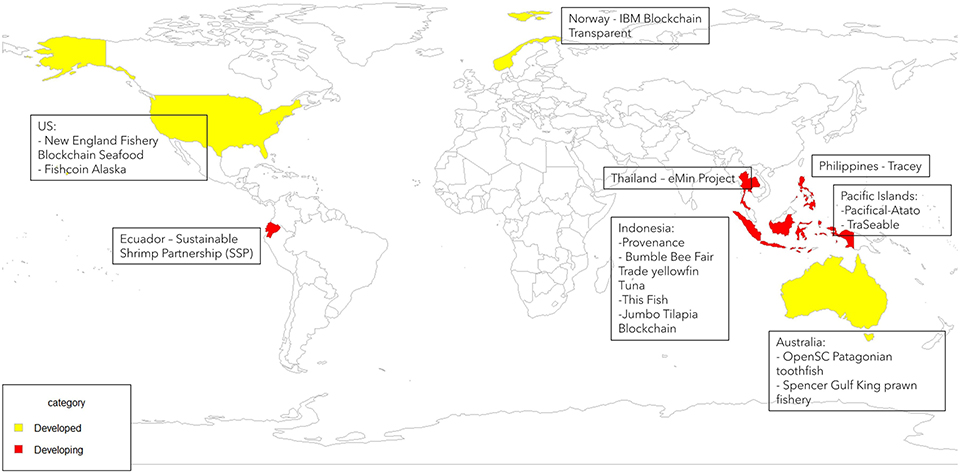
Blockchain use cases in the horizontal dimension of the value chain
The horizontal dimension of the value chain relates to the set regulations and norms at the producer level and the institutional support provided by both public and private actors outside the value chain, to build the capabilities that will enable producers to participate in the value chain. In the case of fishery, it includes the rules on fishing catch quota, licenses, and gears and the given supports to fishers such as training, education and funding provided by government and non-government organizations (NGOs).
The issues that the horizontal dimension tries to address include the level of inequality and access to capital by local producers to improve their capability to participate in the global value chains. Blockchain addresses these issues through various use cases. These include blockchain for decentralized insurance protection for producers, decentralized financing and micro-credit for banks and producers, and tokenization and exchange of agricultural resources. Blockchain implementation at the horizontal level can help producers to comply with requirements of the vertical dimension of the value chain such as sustainability standards.
The results of this study also indicate that there has been limited focus on the use cases of blockchain at the horizontal dimension of the value chain. Since most fish and seafood come from developing countries, access to resources and financing are important for fishers and aquaculture farmers to adopt blockchain technology. For fisheries in developed countries, small-scale fisheries could be the relevant focus in terms of aiding their compliance with market and government regulations via blockchain.
To improve blockchain application at the horizontal level, fisheries can learn from existing use cases of blockchain that focus on the producer level such as Decentralized Finance (DeFi) in agriculture, decentralized insurance protections such as Etherisc, and micro-financing and loans for small businesses or producers in developing countries.
Challenges and prospect of blockchain in fishery and aquaculture
Despite the use cases found in the literature, overall, there is still limited application of blockchain in fisheries and aquaculture. Only a handful of global fisheries use blockchain based on the number of use cases. There are challenges that need to be overcome and opportunities that need to be developed, as identified in the results of this study. In terms of challenges, firstly, there needs to be greater awareness on how blockchain can be applied in seafood and fishery.
The limited adoption of blockchain could be attributed to three factors: (1) suitability of blockchain to solve a given problem, (2) incentive(s) to motivate fishers and other chain actors to adopt blockchain, and (3) trust in blockchain technology use.
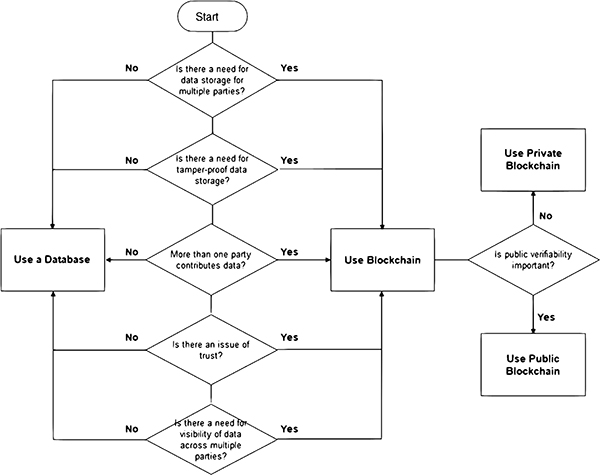
The first step is to understand whether blockchain is needed in fishery or not based on a decision tree. The need for ledger technology is determined by factors such as the need for data storage of multiple entities, tamperproof and need for auditing, more than one entity contributes to data and shared visibility. If all these elements are present in the given fishery case, it is more likely that blockchain could be a solution to address fishery problems. The various use cases presented in this study show that multiple parties ranging from government, NGOs, retailers and producers in fishery and aquaculture, require sharing and validating of data in the blockchain.
In terms of incentives, it is both a challenge and at the same an opportunity for future adoption of blockchain. Many use cases of blockchain in various industries failed and only reached pilot phase, because of the lack of tangible incentives for the chain actors, especially the producers. The adoption rate of blockchain for improving the sustainability of fishery and aquaculture will more likely become higher if the incentives for participating in blockchain is tangible.
Finally, improving trust in the use of blockchain can improve its adoption in fishery and aquaculture. As seen in various studies on the implementation of blockchain in fisheries, the authenticity and accuracy of data that enters the blockchain has been a challenge. Most fisheries are reliant on human input and lots of paperwork, making the data that enter the blockchain prone to error. In addition, different technologies, which vary from data format and required data, are used by actors at different stages of the value chain. This makes it difficult to harmonize blockchain use among chain actors.
To address the challenge of data authenticity and accuracy, the use of automated data entry through IoT devices in fishery could be anchored on a blockchain. Other methods include the use of fishing boxes with sensors, identifiers that generate the DNA and chemical properties of product or species, Automatic Identification System, and blockchain that can reconcile real-time data and check for fraudulent information.
Perspectives
This is a review of use cases and future prospects of blockchain in fishery and aquaculture. The main findings can be summarized in three parts. First, blockchain in fishery and aquaculture value chains are mostly applied in the vertical dimension, in the form of traceability and payment/incentive to a lesser extent. Second, the application of blockchain in the horizontal dimension of the value chain is still limited. More attention could be given to De-fi blockchain projects since the majority of the fishery and aquaculture producers are from developing countries. Access to financing can motivate developing country producers to adopt blockchain, and as such, enable them to improve their production practices. And third, challenges such as the suitability, incentives, and trust in the adoption of blockchain technology pose opportunities for future implementation of blockchain in fishery and aquaculture.
Being able to identify whether a blockchain is needed or not, designing blockchain that focus on tangible incentives, and anchoring blockchain on automated technologies can improve adoption of blockchain in the future.
The analysis of this study is limited to the application of blockchain in fishery and aquaculture value chains. Nevertheless, this framework could also be applied in investigating the use of blockchains in other sectors, such as agri-food and healthcare logistics. Future research may also investigate the anchoring of the physical assets and data in fishery and aquaculture value chain using automation, robotics and IoT among others. Finally, on an applied level, future research can look at the actual perceptions of fishers, aquafarmers and other chain actors related to the adoption of blockchain technologies in their practices.
Now that you've reached the end of the article ...
… please consider supporting GSA’s mission to advance responsible seafood practices through education, advocacy and third-party assurances. The Advocate aims to document the evolution of responsible seafood practices and share the expansive knowledge of our vast network of contributors.
By becoming a Global Seafood Alliance member, you’re ensuring that all of the pre-competitive work we do through member benefits, resources and events can continue. Individual membership costs just $50 a year.
Not a GSA member? Join us.
Authors
-
Frazen Tolentino-Zondervan, Ph.D.
Corresponding author
Research Group Logistics and Alliances, International School of Business, HAN University of Applied Sciences, Arnhem, the Netherlands[109,111,99,46,108,105,97,109,103,64,111,110,105,116,110,101,108,111,116,110,101,122,97,114,102]
-
Pham Thi Anh Ngoc, Ph.D.
School of Business and Management, RMIT University, Viet Nam
-
Jamal Luka Roskam, Ph.D.
Wageningen Economic Research, Wageningen University & Research, Wageningen, the Netherlands
Tagged With
Related Posts

Innovation & Investment
Is aquaculture ready for the blockchain revolution?
The emerging technology, known as the foundation for cryptocurrencies, may be the trustworthy traceability tool the industry needs in a digitally driven world.
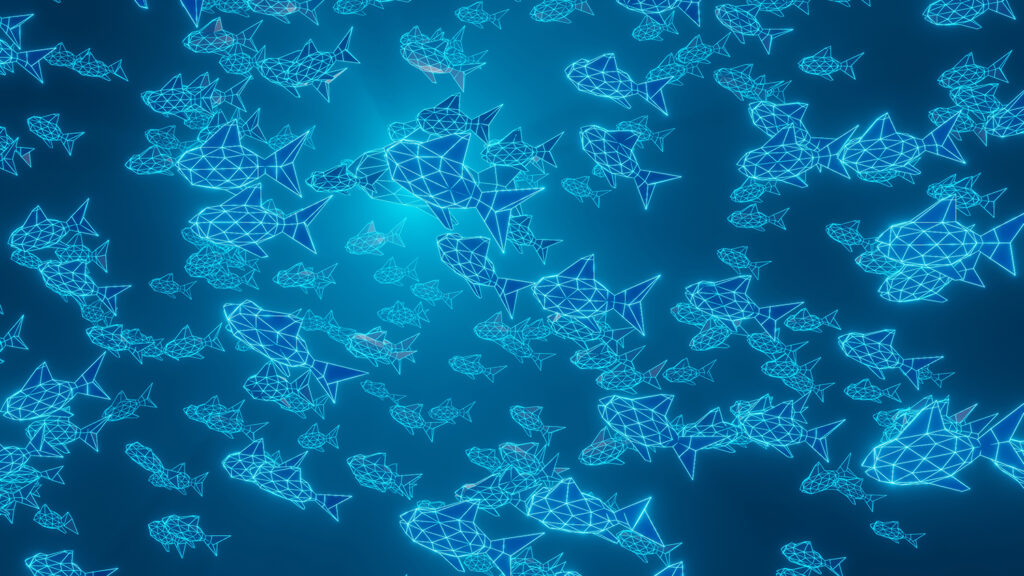
Innovation & Investment
‘AI ticks all the boxes’ and is proving to be a perfect match for aquaculture
Artificial intelligence (AI) is rippling through the aquaculture industry, promising greater efficiencies and insights, as well as investor interest.
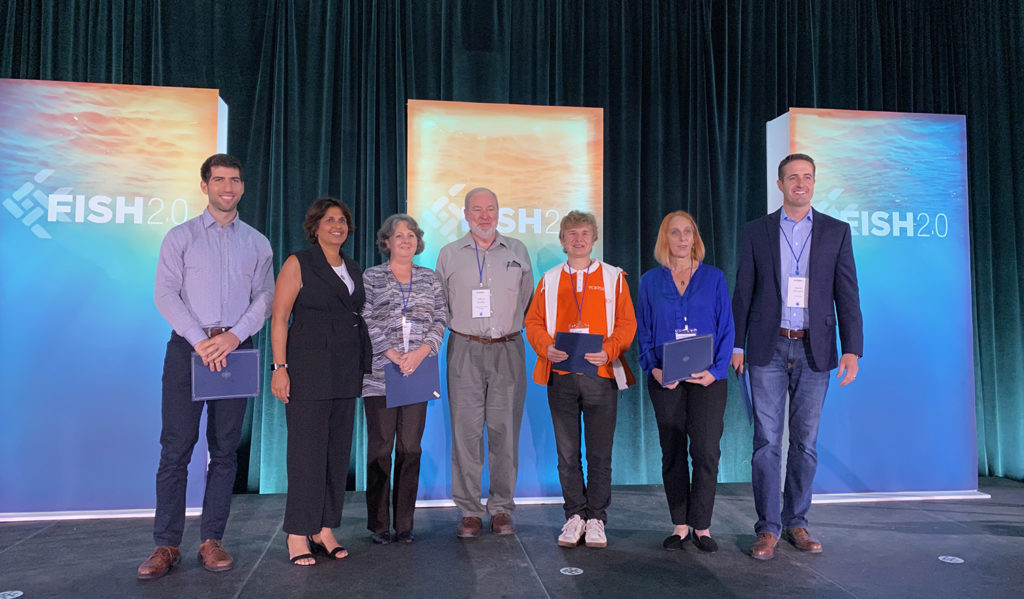
Innovation & Investment
Exit stage right: Fish 2.0 offers final set of winning innovators
Nearly 40 entrepreneurs took the stage to pitch their seafood industry-changing innovations in front of a room full of discriminating investors.
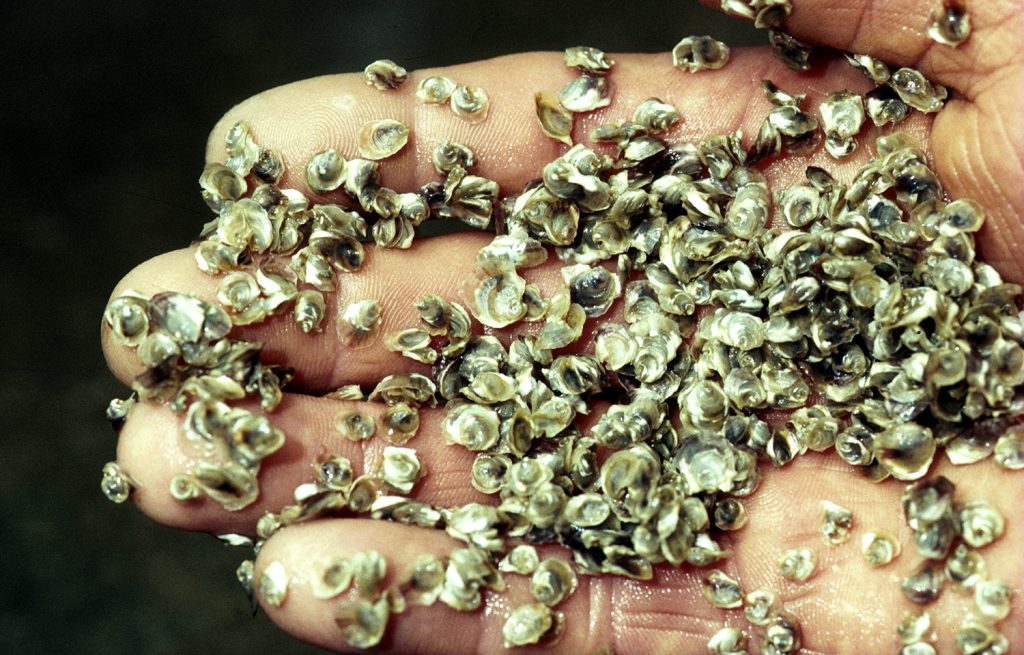
Innovation & Investment
Disruptive technologies for aquaculture, part 1
Increasing integration of various disruptive technologies into aquaculture practices will improve productivity and sustainability.


![Ad for [AQUA]](https://www.globalseafood.org/wp-content/uploads/2025/07/ASLS_web2025_1050x125.png)
